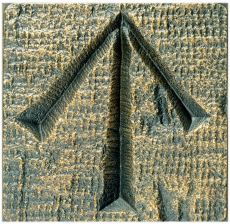The Road Begins
In the early 1820s, the colonists of NSW were beginning to see the colony in a more favourable light as a ‘true mine of colonial wealth’. They were fortunate in having a responsible and far-sighted Governor in Ralph Darling, who tried to endow the colony with, among other things, a fine permanent and all-encompassing road system.
In 1826 a petition was received from the wealthy and articulate settlers of the Hunter Valley and construction commenced with a small force of 62 men at Castle Hill shortly thereafter. The original line of the Great North Road had already been surveyed by Assistant Surveyor Heneage Finch in 1825. The line of road selected was a conglomeration of existing tracks, routes newly discovered by settlers, and the lines of ridges north and south of Wisemans Ferry as you can see from the drawing. In 1826 a petition was received from the wealthy and articulate settlers of the Hunter Valley and construction commenced with a small force of 62 men at Castle Hill North shortly thereafter. The works at Wisemans Ferry initially were surpervised by Lt. Jonathon Warner of the Royal Veterans, seemingly based on thrift and expedience with the walls and drainage structures scarce, crudely and poorly built. The road itself is in places narrow and winding even by contemporary standards.
This work contrasts dramatically with the impressive structures supervised by Warner’s successor, Lt. Percy Simpson who arrived at Wisemans Ferry in mid-1828. Over a four-year period, he controlled a constantly changing workforce… convicts, the majority in chain-gangs. He designed a road which scaled steep rocky valleys between Wisemans Ferry and Mt Manning. Simpson’s involvement on the road covered a period when the new Surveyor-General Thomas Mitchell was assigned the reassessment of the road’s location. Mitchell had his own vision of the road as a great thoroughfare and had obsession about the directness of roads, to the extent that he varied the line and added branches. The conflicts of advice, opinion and administrative action came into evidence from the level of the Governor down.
Governor Darling was recalled to Britain in 1832 and with him went the impetus towards completion of all the Great Roads. The labour force dwindled to two gangs of ten men each (many referred to as ‘cripples’). Finally from 1832, settlers used the newly established steamboat service between Sydney and Newcastle. If they did travel by road, they often ignored the official road, following instead the more direct (or hospitable) lines such as the Maroota Ridge Road, the St Alban’s Road or the Peat’s Ferry Road.
In 1836, the Great North Road was virtually abandoned, probably unfinished. For these likely reasons, much material evidence survives, providing a record not only of the impressive structures but also the more modest work undertaken by the superintendents, surveyors, and convicts in the road-gangs and the chain-gangs.
In 1826 a petition was received from the wealthy and articulate settlers of the Hunter Valley and construction commenced with a small force of 62 men at Castle Hill shortly thereafter. The original line of the Great North Road had already been surveyed by Assistant Surveyor Heneage Finch in 1825. The line of road selected was a conglomeration of existing tracks, routes newly discovered by settlers, and the lines of ridges north and south of Wisemans Ferry as you can see from the drawing. In 1826 a petition was received from the wealthy and articulate settlers of the Hunter Valley and construction commenced with a small force of 62 men at Castle Hill North shortly thereafter. The works at Wisemans Ferry initially were surpervised by Lt. Jonathon Warner of the Royal Veterans, seemingly based on thrift and expedience with the walls and drainage structures scarce, crudely and poorly built. The road itself is in places narrow and winding even by contemporary standards.
This work contrasts dramatically with the impressive structures supervised by Warner’s successor, Lt. Percy Simpson who arrived at Wisemans Ferry in mid-1828. Over a four-year period, he controlled a constantly changing workforce… convicts, the majority in chain-gangs. He designed a road which scaled steep rocky valleys between Wisemans Ferry and Mt Manning. Simpson’s involvement on the road covered a period when the new Surveyor-General Thomas Mitchell was assigned the reassessment of the road’s location. Mitchell had his own vision of the road as a great thoroughfare and had obsession about the directness of roads, to the extent that he varied the line and added branches. The conflicts of advice, opinion and administrative action came into evidence from the level of the Governor down.
Governor Darling was recalled to Britain in 1832 and with him went the impetus towards completion of all the Great Roads. The labour force dwindled to two gangs of ten men each (many referred to as ‘cripples’). Finally from 1832, settlers used the newly established steamboat service between Sydney and Newcastle. If they did travel by road, they often ignored the official road, following instead the more direct (or hospitable) lines such as the Maroota Ridge Road, the St Alban’s Road or the Peat’s Ferry Road.
In 1836, the Great North Road was virtually abandoned, probably unfinished. For these likely reasons, much material evidence survives, providing a record not only of the impressive structures but also the more modest work undertaken by the superintendents, surveyors, and convicts in the road-gangs and the chain-gangs.

